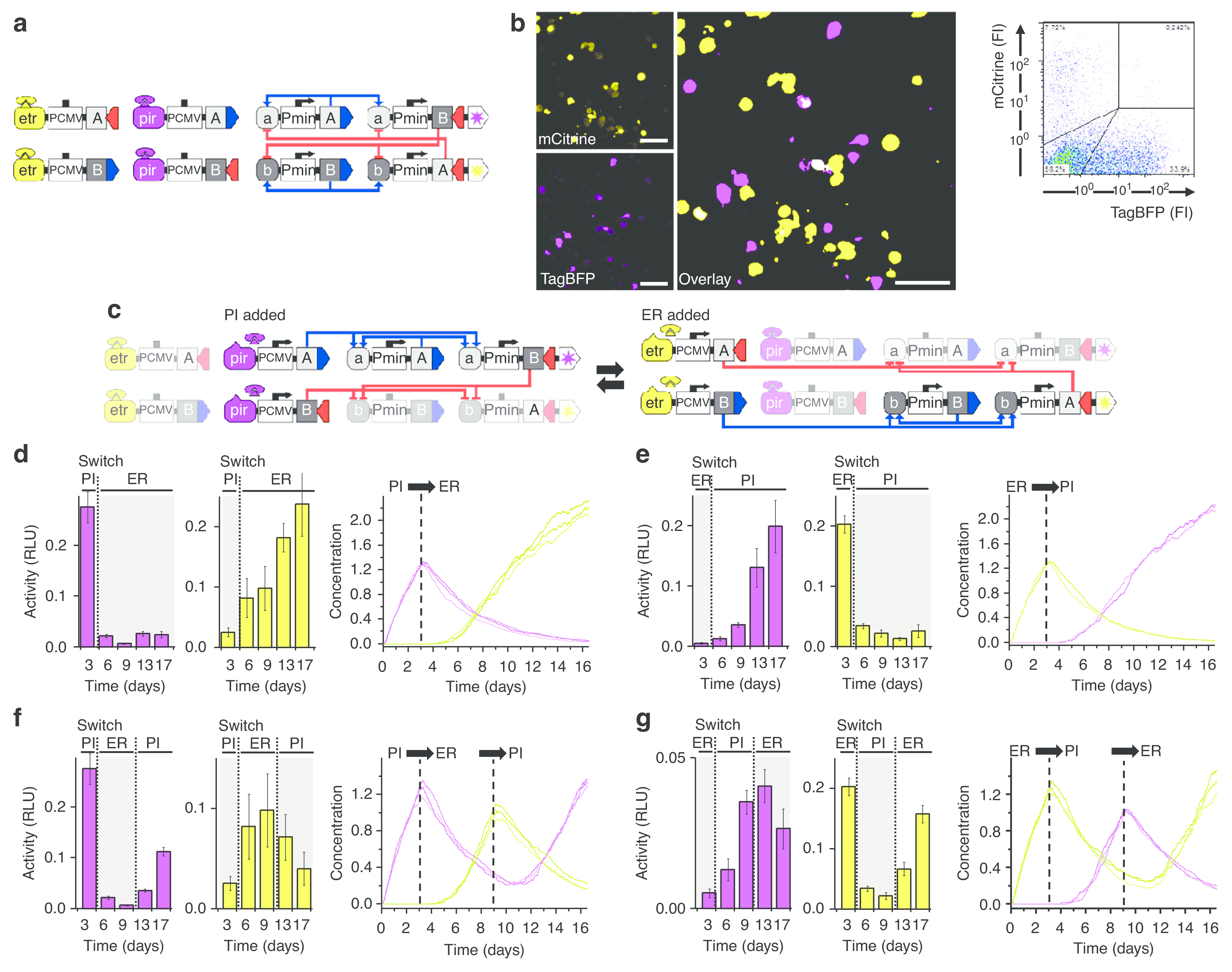
Regulated transitions between the two stable states of the switch. (a) Introduction of minimal promoters into the TALE-based competitive feedback switch. The mutual TALE repressors and the corresponding TALE activators of the feedback loop are placed under the control of a minimal promoter. (b) Confocal microscopy analysis of the TALE-based competitive feedback switch in the absence of external regulation indicates bimodal distribution of fluorescent proteins. Cells expressing either a TagBFP or mCitrine reporter are marked in magenta or yellow, respectively. Cells expressing both reports at the same time (3%) are marked white on the overlay image. Scale bar, 50 mm. (c) Schematic representation of toggling between the pristinamycin (PI)- and erythromycin (ER)-induced states. (d–g) Switching between stable states was experimentally tested using luminometry. The purple bar graphs represent firefly luciferase activity in a switch in which the luciferase gene was used to replace the TagBFP reporter, while the yellow bar graphs correspond to the version with the luciferase gene replacing the mCitrine reporter. Switching between the states was tested in both directions, (d) pristinamycin–erythromycin (PI-ER) and (e) erythromycin–pristinamycin (ER-PI), as well as for multiple switch events: (f) pristinamycin–erythromycin–pristinamycin and (g) erythromycin–pristinamycin–erythromycin. Experimental results are in agreement with the stochastic models (shown on the right side of the panels) and demonstrate transitions between the on and off states depending on the presence of the selected chemical inducer as described in Supplementary Note 2. Results are representative of at least three independent experiments.